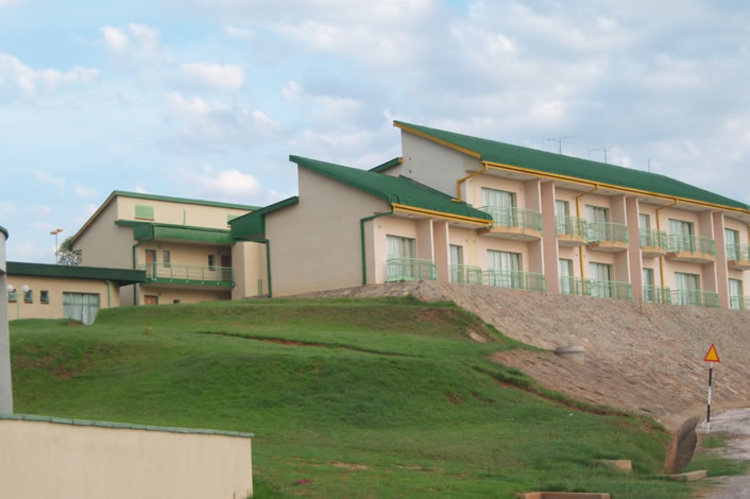Farmers rue poor practices

Jeffrey Gogo Climate Story
When farmer David Nyamadzawo left Dande in 2005 he was looking for land with a bit more rain – and a lot less heat. After ten years wandering, he found that his new home at Wormwood farm, Concession, offered more than just rain – the soils could still hold water, rivers flowed perennially and trees still stood, thanks to the prudent farming practices of previous farm owners.
“Dande was simply very dry,” the 73-year old, a 5-hectare plot beneficiary of the Zimbabwe government land reform programmes, told The Herald Business.
“It (Dande) never rained enough. The soils were tired and the rivers dried up as quickly as they filled up. They had too much sand (sitting at the bottom).”
In the desperate search for moisture, communal farmers in Dande – a low-rainfall district in the country’s north-east – have invaded river banks, as livestock scrounge for pastures scorched away by the hot, dry conditions, Nyamadzawo said.
As farmers clear out key vegetation such as grass and trees along rivers to make way for growing crops, eventually the soil becomes loose, easily washed away by rainwater and into the river. Now, such rudimentary farming practices are widespread, and together with over-grazing are some of the biggest causes of soil erosion and land degradation, say experts.
Soil erosion represents a downward spiral of degradation of the land – soil erodes, which means less fertile soil, which means plants grow less vigorously, which means less ground cover, which then means more erosion etc. On and on it goes. In Zimbabwe, the equivalent of 58 000 square kilometres of soil -about 64 times the size of Harare – are susceptible to erosion, particularly in the areas where shallow Kalahari soils dominate, according to environment regulator EMA. The worst affected river catchments are Save, Umzingwane, and Sanyati, it says.
Lost water
“The effects of soil erosion go beyond the loss of fertile land. It has led to increased pollution and sedimentation in streams and rivers, clogging these waterways and causing declines in fish and other species as well as hydrological droughts,” the Environmental Management Agency says in an article on its website.
What Nyamadzawo, the Concession farmer, refers to as rivers having “too much sand” is as a matter of fact a process called siltation. When rain falls it washes away that fine top-soil, as it runs off, depositing it into rivers and dams. Top-soil is very useful for agriculture, and for vegetation growth (which holds the soil together to prevent erosion). But when in the river, sand washed off from bad farming practices such like stream-bank cultivation steadily fills up the water body to hasten its demise.
“The problem is the loss of soil that all this reflects. Hundred and fifty years ago nearly all the water would have sunk into the ground where the rain falls feeding grasses and trees and then feeding underground water which in turn fed streams and rivers with clean water,” said John Wilson, a Harare agro-ecology expert, in a past interview.
At Lake Chivero, a key source of drinking water for Harare, and irrigation for farmers on the outskirts of the capital, the damage caused by siltation is already evident. According to EMA, the lake’s capacity has shrunk one fifth in the last 60 years. Oppah Muchinguri Kashiri, who has headed the Environment Ministry before the October 9 Cabinet reshuffle, has previously cited the biggest causes of siltation as stream-bank cultivation, deforestation, alluvial mining, settling on wetlands and poor land management. Mazowe, Umzingwane, Runde and Gwayi dams are affected the most, she said.
Switch to contours
And as soil runs away into water bodies, communal farmers have been left ruing poor agricultural practices that not only drag farm output but also hurt nature.
“It will be very important for rural farmers to be informed of the long-term impacts of bad farming practices on food production and on the land,” cautioned Nyamadzawo.
On the average, soil erosion in Zimbabwe washes away 1, 6 million tonnes of nitrogen every year, 15,6 million tonnes of organic matter and 0,24 million tonnes of phosphorus, say experts. On this basis, arable lands alone lose 17,8 million tonnes of soil nutrients each year due to erosion, they say. Much of this damage was occurring in resettled areas, Mr Rukoza, an expert with the Ministry of Agriculture, told a ZTV farming programme on July 11.
He blamed a lack of contour ridges in the resettlement areas as the single largest driver of soil erosion. Contours are a practice in farming designed to prevent runoff from wandering aimlessly, taking with it treasured top soil. They are built with soil across fields contrary to the slope, running between 250 and 400 metres in length depending on soil type, and height of up to 20cm, creating ridges that help channel water away without chaos.
“Farmers are encouraged to build contours, together with storm drains and water runways to prevent water runoff from washing away soils,” Rukoza advised.
Erosion means water lost, said Wilson, the agro-ecologist. “There doesn’t need to be run-off water except off very hard surfaces like rocks and roads and roofs etc,” he told this publication.
“Water in the ground is a positive force. Water running off above the ground is a negative force, as simple as that. All our practices should be geared towards getting water into the ground.”
God is faithful.











Comments